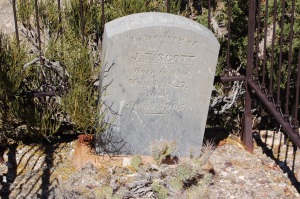Teardrop Rendezvous in Quartzsite
Little Guy Trailers and Paha Que Wilderness have just completed an epic backcountry tour of the Gold Mining areas in the old Fort Tyson area.
Participants traveled from San Diego (main group), Poway, Torrance, Fresno, Las Vegas, Phoenix, Utah and Michigan via Miami (some people use these Teardrops for long term). The tow vehicles varied from radical Off-Road Jeeps to simple family cars… all easily accessing the main camp site in the Plomosa foothills.
It’s amazing how a couple hundred yards off the pavement places you in the same terrain where Wyatt Earp lived!
Both novice and experts were mixed together in comfort as our guide and counselor Jeff Basford of Paha Que Wilderness organized and led a treat in the ultra-dry wilderness. We were surrounded by lava rock formations, gas vents, dozens of cacti, gravel like surfaces of dark volcanic pebbles and rugged volcanic flows.
The history of this area is rich and steeped in the Old West. From the mid 1800’s, hundreds of mines were claimed and worked by individuals and consortiums with rudimentary methods being employed next door to highly-engineered systems. Of the more fascinating accounts was the influx of the French prospectors. The cabins they built can still be seen and visited (rock structures with double wall base). These miners utilized the placer mining techniques and their tailings can be easily identified. Typically, there was a dump area within several feet consisting of old meat cans, soup and food tins intertwined with wagon and equipment skeletons.
The desert is lovely this time of year. Many cactus are blooming and the bees are busy. Although in my mind I expected absolute dryness, it was off set by the numerous Palo Verde trees with it’s vivid light-green bark. The Ocotillo cactus featured wonderful red blossoms plus the royal color of Barrel and Prickly Pear cactus flowers. Apparently, this year with the increased rains, we caught the bloom even at the end of March.
This particular trip was unseasonably warm …. around 105 degrees during the day and 90’s at night. We were very glad for the powered roof vent in our Little Guy Rough Rider model… when an inversion occurred in the middle of the night rendering our exhaust mode useless, I simply reversed the fan direction and wah-lah, we enjoyed a comfortable desert night on our queen-size bed.
What a great way to camp with these Teardrop Trailers. They have just enough storage capacity to make the campsite perfect for a fresh-air outing with amenities. We noticed the various methods employed by our neighbors and it really boils down to personal needs and choices. We saw barbeques next to Dutch Ovens and discussions of utilizing Sun Ovens with the unlimited power supply of the sun. We witnessed solar power panels recharging battery systems and practical Teardrop designed side rooms attached to off-set the heat and provide a lee-side breezeway (built by Paha Que our organizer). A couple Teardrops even employed Air Conditioners with a small generator purring nearby and solar shower cabanas (no need for towels in the super dry air).
This event will hopefully launch into an annual outing with the possibility of a second event into the backcountry with 4×4 vehicles only (and high clearance campers). I anticipate quite a number of participants joining us as there was plenty of area for many more campers.
If you have a Teardrop or Aliner and want to join in, please send your email address to us and we’ll include you in subsequent notices of our campouts. So far, we still want to catch Death Valley in the late fall or early spring, a mountain region lake in Arizona waiting for us on an Indian Reservation and a winery near Julian which would be perfect on a moonless night.
Our sincere thanks go to Jeff Basford and Mike Greaves of Paha Que Wilderness Camping Systems, our organizer, for designing a worthy trip with great historical and geographical account of the area. We also want to thank our participants for becoming good friends in a matter of a few days! There’s nothing like camping buddies.
Most of all we want to thank Camping Life Magazine for joining us with the trip. We should see a great article by fall with the possibility of a cover theme on Teardropping in the remote desert. We highly recommend subscribing to this publication as they endeavor to cover the type of camping near and dear to us all.
See you next trip!
Eric Krag, Regional Sales For Little Guy Trailers









